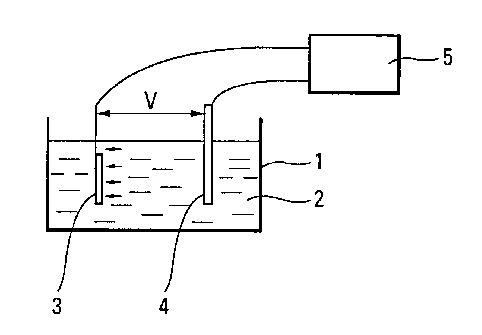Some of the information on this Web page has been provided by external sources. The Government of Canada is not responsible for the accuracy, reliability or currency of the information supplied by external sources. Users wishing to rely upon this information should consult directly with the source of the information. Content provided by external sources is not subject to official languages, privacy and accessibility requirements.
Any discrepancies in the text and image of the Claims and Abstract are due to differing posting times. Text of the Claims and Abstract are posted:
| (12) Patent: | (11) CA 2246215 |
|---|---|
| (54) English Title: | MULTILAYER NON-STICK COATING OF IMPROVED HARDNESS FOR ALUMINUM ARTICLES AND ARTICLES AND CULINARY UTENSILS INCORPORATING SUCH COATING |
| (54) French Title: | REVETEMENT MULTICOUCHE ANTIADHESIF DE DURETE AMELIOREE POUR ARTICLES EN ALUMINIUM; ARTICLES ET USTENSILES CULINAIRES POSSEDANT CE REVETEMENT |
| Status: | Expired and beyond the Period of Reversal |
| (51) International Patent Classification (IPC): |
|
|---|---|
| (72) Inventors : |
|
| (73) Owners : |
|
| (71) Applicants : |
|
| (74) Agent: | BERESKIN & PARR LLP/S.E.N.C.R.L.,S.R.L. |
| (74) Associate agent: | |
| (45) Issued: | 2007-05-08 |
| (22) Filed Date: | 1998-09-02 |
| (41) Open to Public Inspection: | 1999-03-10 |
| Examination requested: | 2003-08-05 |
| Availability of licence: | N/A |
| Dedicated to the Public: | N/A |
| (25) Language of filing: | English |
| Patent Cooperation Treaty (PCT): | No |
|---|
| (30) Application Priority Data: | ||||||
|---|---|---|---|---|---|---|
|
A multilayer non-stick coating of improved hardness
for aluminum articles includes an alumina-based hard
first layer obtained by anodic oxidation of the aluminum
article immersed in an alkaline solution. Micro-arcs are
applied to the article by means of a high current and a
high potential difference. A second layer based on
polytetrafluoroethylene and chemical agents constitutes a
primer for one or more polytetrafluoroethylene-based
finish layers.
Note: Claims are shown in the official language in which they were submitted.
Note: Descriptions are shown in the official language in which they were submitted.

2024-08-01:As part of the Next Generation Patents (NGP) transition, the Canadian Patents Database (CPD) now contains a more detailed Event History, which replicates the Event Log of our new back-office solution.
Please note that "Inactive:" events refers to events no longer in use in our new back-office solution.
For a clearer understanding of the status of the application/patent presented on this page, the site Disclaimer , as well as the definitions for Patent , Event History , Maintenance Fee and Payment History should be consulted.
| Description | Date |
|---|---|
| Time Limit for Reversal Expired | 2010-09-02 |
| Letter Sent | 2009-09-02 |
| Grant by Issuance | 2007-05-08 |
| Inactive: Cover page published | 2007-05-07 |
| Inactive: Final fee received | 2007-02-22 |
| Pre-grant | 2007-02-22 |
| Notice of Allowance is Issued | 2007-01-09 |
| Letter Sent | 2007-01-09 |
| 4 | 2007-01-09 |
| Notice of Allowance is Issued | 2007-01-09 |
| Inactive: Approved for allowance (AFA) | 2006-12-13 |
| Amendment Received - Voluntary Amendment | 2006-05-08 |
| Inactive: IPC from MCD | 2006-03-12 |
| Inactive: S.29 Rules - Examiner requisition | 2005-11-18 |
| Inactive: S.30(2) Rules - Examiner requisition | 2005-11-18 |
| Amendment Received - Voluntary Amendment | 2003-12-11 |
| Letter Sent | 2003-09-08 |
| Request for Examination Requirements Determined Compliant | 2003-08-05 |
| All Requirements for Examination Determined Compliant | 2003-08-05 |
| Request for Examination Received | 2003-08-05 |
| Application Published (Open to Public Inspection) | 1999-03-10 |
| Inactive: Single transfer | 1998-12-17 |
| Inactive: IPC assigned | 1998-11-06 |
| Classification Modified | 1998-11-06 |
| Inactive: IPC assigned | 1998-11-06 |
| Inactive: First IPC assigned | 1998-11-06 |
| Inactive: IPC assigned | 1998-11-06 |
| Inactive: Courtesy letter - Evidence | 1998-10-20 |
| Inactive: Filing certificate - No RFE (English) | 1998-10-19 |
| Application Received - Regular National | 1998-10-15 |
There is no abandonment history.
The last payment was received on 2006-08-29
Note : If the full payment has not been received on or before the date indicated, a further fee may be required which may be one of the following
Patent fees are adjusted on the 1st of January every year. The amounts above are the current amounts if received by December 31 of the current year.
Please refer to the CIPO
Patent Fees
web page to see all current fee amounts.
| Fee Type | Anniversary Year | Due Date | Paid Date |
|---|---|---|---|
| Application fee - standard | 1998-09-02 | ||
| Registration of a document | 1998-12-17 | ||
| MF (application, 2nd anniv.) - standard | 02 | 2000-09-05 | 2000-08-29 |
| MF (application, 3rd anniv.) - standard | 03 | 2001-09-04 | 2001-08-20 |
| MF (application, 4th anniv.) - standard | 04 | 2002-09-03 | 2002-08-28 |
| Request for examination - standard | 2003-08-05 | ||
| MF (application, 5th anniv.) - standard | 05 | 2003-09-02 | 2003-09-02 |
| MF (application, 6th anniv.) - standard | 06 | 2004-09-02 | 2004-08-27 |
| MF (application, 7th anniv.) - standard | 07 | 2005-09-02 | 2005-08-30 |
| MF (application, 8th anniv.) - standard | 08 | 2006-09-05 | 2006-08-29 |
| Final fee - standard | 2007-02-22 | ||
| MF (patent, 9th anniv.) - standard | 2007-09-04 | 2007-08-29 | |
| MF (patent, 10th anniv.) - standard | 2008-09-02 | 2008-09-02 |
Note: Records showing the ownership history in alphabetical order.
| Current Owners on Record |
|---|
| SEB S.A. |
| Past Owners on Record |
|---|
| CLAUDINE GARDAZ |
| JEAN-PIERRE BUFFARD |